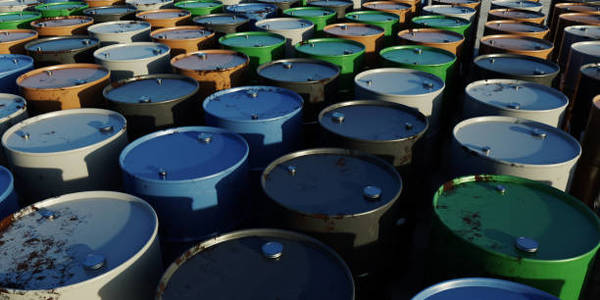OPEC lowers oil demand growth forecast for 2024 to 2.1 million b/d
The Organization of the Petroleum Exporting Countries (OPEC) has cut its world oil demand growth forecast to 2.1 million b/d, with total consumption reaching 104.3 million b/d in 2024, about 135,000 b/d lower than its previous month's assessment.
 PHOTO: Oil barrels. Getty Images
PHOTO: Oil barrels. Getty Images
The slight downward revision in global oil demand is due to an apparent decline in demand growth in the world’s second largest consumer – China, the oil-producers body said in its monthly oil market report (MOMR).
The Saudi Arabia-led coalition expects oil demand growth in the non-OECD countries, including China and India, to be around 1.9 million b/d to reach 58.5 million b/d in 2024. Oil demand in the OECD group of developed countries is expected to reach 45.8 million b/d this year.
OPEC sees global oil demand growth at 1.8 million b/d in 2025, with total consumption reaching 106.1 million b/d, noting a slight decline of 65,000 b/d from its previous estimate. “Non-OECD demand is set to drive next year’s growth, increasing by about 1.7 mb/d [1.7 million b/d], led by contributions from China, the Middle East, Other Asia, and India,” it said.
Demand for crude produced by the countries participating in the Declaration of Cooperation (DoC) is expected to stand at about 43 million b/d in 2024, slightly down by 100,000 b/d from the previous month’s estimates, the Vienna-headquartered group said.
Supply projections
The 12 core-OPEC members produced 26.75 million b/d of crude oil in July, about 185,000 b/d higher than June’s production levels. “Crude oil output increased mainly in Saudi Arabia, Iraq and Iran, while production in Libya decreased,” OPEC said.
Total production from OPEC members within the DoC increased by 117,000 b/d in July to 40.9 million b/d, it said. Crude oil production in Iraq, the group’s second-largest producer, increased by 57,000 b/d to 4.25 million b/d in July. The country's July output was 250,000 b/d higher than its designated quota of 4 million b/d, according to the OPEC report.
Meanwhile, crude oil production from non-OPEC countries which include members of the OPEC+ alliance or participants in the DoC, fell by 68,000 b/d to 14.16 million b/d in July.
Crude oil output primarily decreased in Kazakhstan, Russia and Sudan, OPEC said. Russia, a non-OPEC DoC country, produced around 9 million b/d of crude in July, about 26,000 b/d lower than production in the previous month, according to the report.
The DoC comprises the core 12 OPEC member countries, along with Azerbaijan, Bahrain, Brunei, Kazakhstan, Malaysia, Mexico, Oman, Russia, and Sudan. Together, these countries form the group, also commonly known as OPEC+.
By Aparupa Mazumder
Please get in touch with comments or additional info to news@engine.online





